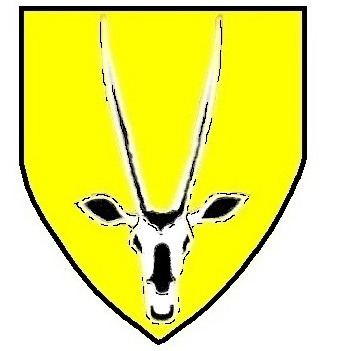Active October 1973 - present Allegiance South Africa Type Infantry | Country South Africa Branch South African Army Role Mechanised infantry | |
 | ||
8 South African Infantry Battalion is a mechanized infantry unit of the South African Army. It is equipped with Infantry Fighting Vehicles (IFV) used for fast transport and combat. The battalion uses Ratel IFVs all-wheel drive vehicles (6×6), for mobility across rough ground. Support weapons for mechanized infantry are also provided with motorized transport, or are built directly into IFVs, in order to keep pace with the IFVs in combat. The battalion was raised at Upington in the Northern Cape in 1973, and assigned to the Infantry Formation.
Contents
- Activation
- The Border WarAngolan Civil War
- Battle of Cuito Cuanavale
- Attack on Calueque Dam
- Namibian independence
- South Africa internal operations
- Since 1994
- Peacekeeping
- Vehicle mounted weapons
- Lighter and personal weapons
- Future
- Battle honours
- References
8 SAI continues to train for conventional warfare and forms part of the annual brigade-level Lohatla Army Battle School exercise. Training includes IFV-mounted and dismounted fire-and-move drills, and integration with Engineers, Armour, Artillery and Air Force elements.
Activation
The unit was established at Upington in the Northern Cape in October 1973 and received its first batch of national service trainees the next January. They could, however, not cope with the Gordonia heat and the unit afterwards received trainees in July.
The Border War/Angolan Civil War
Between 1979 and 1989, 8 SAI participated in the Border War. Its contingent was known as 63 Mechanised Battalion Group, part of 60 Brigade. 8 SAI contributed troops to the following operations:
Battle of Cuito Cuanavale
Attack on Calueque Dam
The Cubans opened a second front on 27 June 1988 against the South Africans and launched a ground offensive in the direction of Calueque Dam in Southern Angola. The area to the north of the dam became the scene of fighting. MiG-23 aircraft attacked the facilities, bombing a bridge, sluice gates, a pump, a generator, and a pipeline to Ovamboland in three waves. 7 soldiers from 8 SAI and 4 from the armoured corps lost their lives in this engagement.
Namibian independence
8 SAI, as part of 61 Mechanised Infantry Battalion Group and 63 Mech, was part of the last contingent of South African troops to withdraw from Namibia at independence in 1990 (Operation Agree) in accordance with the United Nations Security Council Resolution 435 handing over responsibility to the United Nations Transition Assistance Group (UNTAG).
South Africa internal operations
From 1990, the unit deployed internally in South Africa. Its main tasks at this time included counter insurgency in urban and rural areas.
Since 1994
In June 1994, the unit received its Colours, the first presented to a unit in the new South African National Defence Force.
In 2006, 61 Mechanised Infantry Battalion Group was disbanded and most of its members were transferred to 8 SAI.
8 SAI's main training area, at Riemvasmaak, north of Upington, was transferred to a civilian community. Since then 8 SAI uses the SA Army Combat Training Centre at Lohatla as it main training area currently.
Peacekeeping
8 SAI was again redeployed to the Democratic Republic of Congo as part of Operation Mistral under the auspices of MONUSCO in December 2009 to May 2010 and in November 2011 to June 2012.
1 Ratel 20 per section, 3 sections per platoon, 3 platoons per company. 1 Ratel command per platoon, 4 per company.
Vehicle mounted weapons
8 SAI is equipped with Ratel 20 Infantry Fighting Vehicles, Ratel 60 mm (2.4 in) Mortar Platform Vehicles, Ratel Command Vehicles with mounted 12.7 mm (0.50 in) machine guns, Ex 61
Mech Ratel 90s and Ratel 81mms, Kwevoel 100 Armoured Trucks for IFV Recovery, field maintenance, fuel bunkers and water provision, Samil 50 and 100 logistics trucks, Samil 20 trucks for its organic field workshops, Casspir APCs for its forward artillery observation party, and Rinkhals Field Ambulance. 8 SAI has also used Buffel IFVs and Mambas at certain stages in its history. Ratel mounted weapons include the Denel Land Systems GI-2 20 mm (0.79 in) Quick Firing Canon (QFC) (Ratel mounted), 60 mm (2.4 in) breech-loading mortar (Ratel mounted), Browning M1919 Machine gun and the Browning M2 12.75 mm (0.502 in) Machine gun.
Lighter and personal weapons
8 SAI is equipped with the:
Future
Under Project Hoefyster, the SANDF will eventually replace the Ratel family of vehicles with the Badger system.
Nine versions are contemplated of which three are earmarked for mechanized infantry battalions such as 8 SAI:
